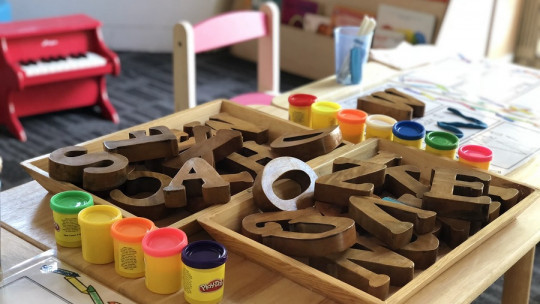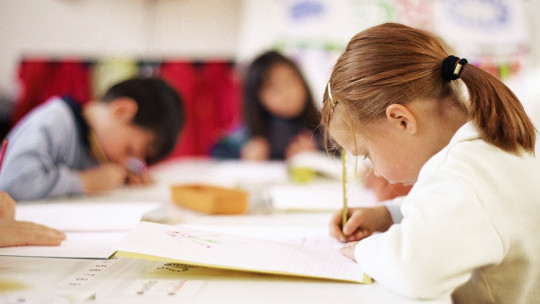
Learning styles are the consistent way in which students respond to or use stimuli in the learning environment, i.e. the educational conditions under which a student is most likely to learn
Therefore, learning styles do not really refer to what students learn, but rather how they prefer to learn and, in many cases, how it is easiest for them to learn. Learning styles are a mix of characteristic cognitive, affective, and physiological factors that serve as relatively stable indicators of how the learner perceives, interacts, and responds to the learning environment.
Learning styles: what are they?
There are people who find it easier to learn by observing, because colors or photographs help them learn more easily; while others learn better by reading and this is their way of studying.
This should not surprise us, because The human brain can present many variations, and, on the other hand, the cerebral cortex is structured in such a way that we create abstract ideas and thoughts from the sensory information that reaches it from various sources; Thus, in some people this generation of abstract thoughts is more supported by an information processing circuit, while in other people another circuit of interconnected neurons predominates.
Have you ever thought about which learning style is most effective for you? The truth is that there is no single way of learning, but rather each of us tends to feel more comfortable with one learning style or another
Therefore, in this article we review the various learning styles. Don’t miss them!
Learning styles according to Alonso, Gallego and Honey
For Alonso, Gallego and Honey (1995), authors of the book Learning styles, learning and improvement procedures, “it is necessary to know more about learning styles and which of these define our preferred way of learning.
This is essential for both learners and teachers.” The authors state that there are 4 learning styles. They are the following.
1. Assets
Students who prefer active learning style They enjoy new experiences, are not skeptical and have an open mind They do not mind learning a new task, since they do not avoid challenges even though this may compromise the idea they have of themselves and their abilities.

2. Reflective
Individuals with a preference for the reflective learning style look at experiences from different angles They also analyze data, but not before having determinedly reflected. They are cautious and do not rush to draw conclusions from their experiences, which is why they can seem doubtful.
3. Theorists
They usually have a perfectionist personality. They are also analytical, but they like to synthesize and seek to integrate facts into coherent theories, without leaving loose ends and unanswered questions. They are rational and try to remain objective above all.
4. Pragmatists
They are rather practical and need to check their ideas They are realistic when it comes to making decisions and solving an issue, and they orient their learning towards the need to provide answers to specific problems. For them, “if it is useful it is valid.”
Other learning styles that we can find
But the previous classification is not the only one that exists, other authors have proposed different learning styles. They are the following:
5. Logical (mathematical)
Individuals with the logical learning style prefer to use logic and reasoning rather than contextualizing. They use diagrams in which relevant things are shown. They associate words even without finding meaning in them.
6. Social (interpersonal)
This style of learning, also called group, It is characteristic of those people who prefer to work with others whenever they can These individuals try to share your findings with others. and put their conclusions into practice in group settings. “Role playing” is an ideal technique for them.
7. Solitary (intrapersonal)
This style of learning, also called individual, It is characteristic of those who prefer solitude and tranquility to study They are reflective people and tend to focus on topics that interest them and place a lot of value on introspection and “thought experiments”, although they can also experiment with matter.
8. Visual learning
These students They are not good at reading texts but, on the other hand, they assimilate images very well, diagrams, graphs and videos. It is often practical for them to use symbols or create visual shorthand when taking notes, as they memorize better that way.
9. Aural (auditory)
These students learn best when they listen For example, in discussions, debates or simply with the teacher’s explanations. While other students may learn more by coming home and opening the class manual, these students learn a lot in the classroom, listening to teachers.
10. Verbal (reading and writing)
Also known as language learning, students with this learning style They study better by reading or writing For them, it is better to read the notes or simply prepare them. The process of preparing these notes is a good tool for learning.
11. Kinesthetic
These people learn best by doing, that is, by doing more than reading or observing It is in this practice where they carry out analysis and reflection. Teachers who want to get the most out of these students must involve them in the practical application of the concepts they intend to teach.
12. Multimodal
Some individuals combine several of the above styles, so they do not have a specific preference. Your learning style is flexible and you are comfortable learning with various learning styles.
Understanding learning styles: what does science say?
Learning styles have more influence on learning than we realize, because they represent the internal experiences we have or the way we remember information.
Researchers have been interested in this phenomenon, and it is estimated that each learning style uses different parts of the brain Here are some examples:
An approach to the theory of multiple intelligences
Taking into account what was stated in the previous paragraphs, a theory that revolutionized the concept of intelligence makes a lot of sense. This theoretical idea was born when Howard Gardner warned that the intelligence quotient (IQ) It is not the only form of intelligence that exists, and identified and described up to eight different types of intelligence. According to this conception of the human mind, there are several types of mental abilities that, in one way or another, are relatively independent of each other and can be considered self-sufficient types of intelligence.
Thus, learning styles could indicate the different ways in which people learn depending on the type of propensities and facilities available to them, taking into account those intelligences in which they excel most and least.








